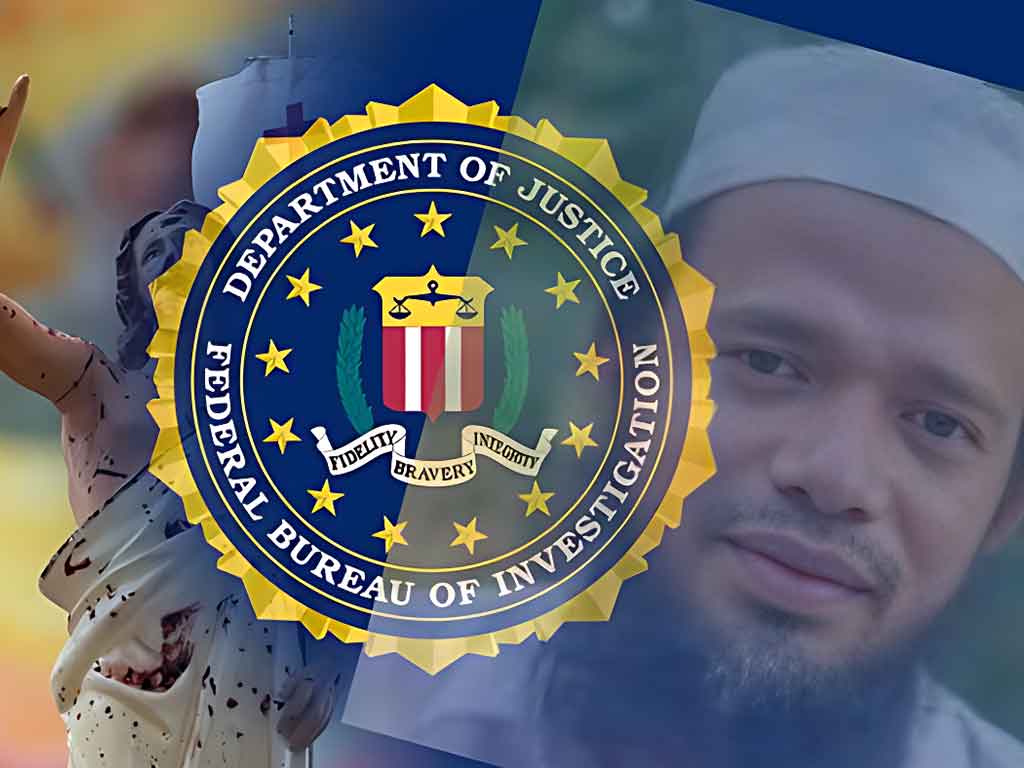
When Mohamed Naufer, a key figure within Sri Lanka’s ISIS-affiliated network, sat down with FBI agents, what emerged was a harrowing and detailed account of how one of the country’s worst tragedies—the 2019 Easter Sunday attacks—was orchestrated from the ground up. In four separate interviews held at the Criminal Investigation Department (CID) headquarters in Colombo between June 2019 and March 2020, Naufer laid bare the anatomy of an extremist cell that had evolved from ideological murmurs to calculated mass murder.
Naufer referred to himself as the “second emir” or deputy leader of ISIS in Sri Lanka, confirming a leadership structure that until then had been clouded in secrecy and suspicion. He revealed how his radicalization had taken root not overnight, but through years of exposure—beginning during his time in Qatar in 2009, where he first encountered hardline ideas. But it wasn’t until 2017 that he fully embraced the ideology, prompted by the influence of Zahran Hashim, the man who would later lead the Easter Sunday suicide bombings. Zahran, through recorded speeches, online videos, and targeted material, mentored Naufer directly and steered him toward an unwavering allegiance to the Islamic State.
That allegiance became official when Zahran, Naufer, and several others filmed a video deep in a Sri Lankan forest. In it, they pledged their loyalty—bayat—to ISIS and its then-leader Abu Bakr al-Baghdadi. The video was routed through intermediaries to Syria and received recognition from ISIS Central Command. With that nod from the top, Sri Lanka’s jihadist group was no longer just an isolated cluster of radicals—it was now an official ISIS affiliate. Naufer was appointed as Zahran’s second-in-command, not just in name, but in action.
His responsibilities were far-reaching. He personally coordinated and oversaw eight multi-day training programs across secret locations, often in safe houses. These sessions, based on official ISIS training manuals, covered everything from firearms handling and bomb-making to ideological indoctrination. Recruits were taught to use Type-56 rifles, 9mm pistols, and how to manufacture nitrate-based explosives. Each course concluded with a final pledge of allegiance, symbolically sealing their role in the larger network.
Secrecy was paramount. According to Naufer, no phones were allowed during sessions. Real names were forbidden. Communications were strictly encrypted, conducted through secure apps like Telegram and Threema. Zahran provided phones modified specifically for covert use, and members swapped SIM cards frequently to avoid detection. Voice calls were banned altogether—only encrypted messages were allowed. This wasn’t just a group of extremists; it was a covert, disciplined machine built for endurance and evasion.
Naufer told agents that the group didn’t limit its ambitions to Sri Lanka. They openly discussed attacking American citizens and U.S. interests abroad. Some conversations, according to Naufer, even explored the possibility of assassinations and strategies for waging global jihad. The planning was strategic, ideological, and ruthlessly systematic.
Although Naufer claimed to have broken away from Zahran roughly six weeks before the Easter attacks, citing concerns over operational security and leadership disputes, his own testimony complicates that narrative. He said he last saw Zahran on March 9, 2019. Then, he retreated into a safe house in Wattala. But on the morning of April 21, he was visited by group member Anwar Mohamed Rizkan, who delivered the news: Zahran had executed the plan. The attacks had happened. Naufer claimed he fled immediately, insisting he had no prior knowledge of the targets or precise timings. Yet, he admitted to overhearing bomb-making discussions between Hastun—who later blew himself up at St. Sebastian’s Church—and Zahran’s brother months earlier.
His insights didn’t end there. Naufer offered theories on why Zahran targeted specific locations. The attacks, he believed, were retaliation for a U.S.-led assault on ISIS fighters in Syria in March 2019. He also referenced ISIS directives encouraging strikes against churches and Chinese interests, pointing to the Shangri-La Hotel—headquartered in Hong Kong—as a potential motive. Martyrdom, Naufer said, was preferred over capture. Zahran believed targeting Western-linked hotels would symbolically hit at the heart of the so-called “infidels.”
When Naufer was arrested, he attempted to destroy his phone. Failing that, he reset it to factory settings, hoping to erase incriminating content. But when shown the device in a March 2020 interview, he admitted it was his, and that he had it with him at the time of his arrest. The FBI’s forensic work soon uncovered more. Nine other individuals detained by Sri Lankan authorities confirmed Naufer’s senior position. Thirteen witnesses testified that a leadership rift occurred in the weeks before the bombings. None disputed Naufer’s authority within the group.
Digital evidence only strengthened the case. Naufer’s Facebook posts openly endorsed ISIS. He referred to the United States as “the enemy of Allah” and shared coded messages like “1515” in public exchanges. He joked about being arrested for sympathy. He traded emails with Zahran that contained propaganda articles from ISIS’s al-Naba magazine and imagery glorifying martyrdom.
One of the most damning links came from Ilham Ibrahim, one of the suicide bombers, who handed over a hard drive to his brother before the attack. Forensic analysis showed that its contents—pamphlets, bomb-making guides, ideological materials—mirrored everything Naufer had described. Even his personal blog, running from 2014 to 2018, was reviewed by FBI agents. Over hundreds of posts, the evolution of thought was clear: from conservative religious discourse to full-blown ISIS allegiance.
For years, there had been whispers that the Easter Sunday attacks were too complex, too coordinated, to be the work of mere lone wolves. Naufer’s confession removes all doubt. The plot was carefully constructed by a hardened, ideologically-driven jihadist network operating within Sri Lanka but guided by the strategic aims of ISIS. It was never about anger in isolation. It was about loyalty, training, planning—and a deadly execution that left a nation grieving.
Despite his late attempts to distance himself, Naufer’s own words—and the digital, testimonial, and forensic evidence surrounding him—place him squarely at the heart of a terrorist machine that shattered hundreds of lives on Easter morning. His story is not one of regret. It is a clear blueprint of how terror took root in Sri Lanka, meticulously cultivated by those who pledged allegiance not just to an ideology, but to destruction itself.
SOURCE :- SRI LANKA GUARDIAN




